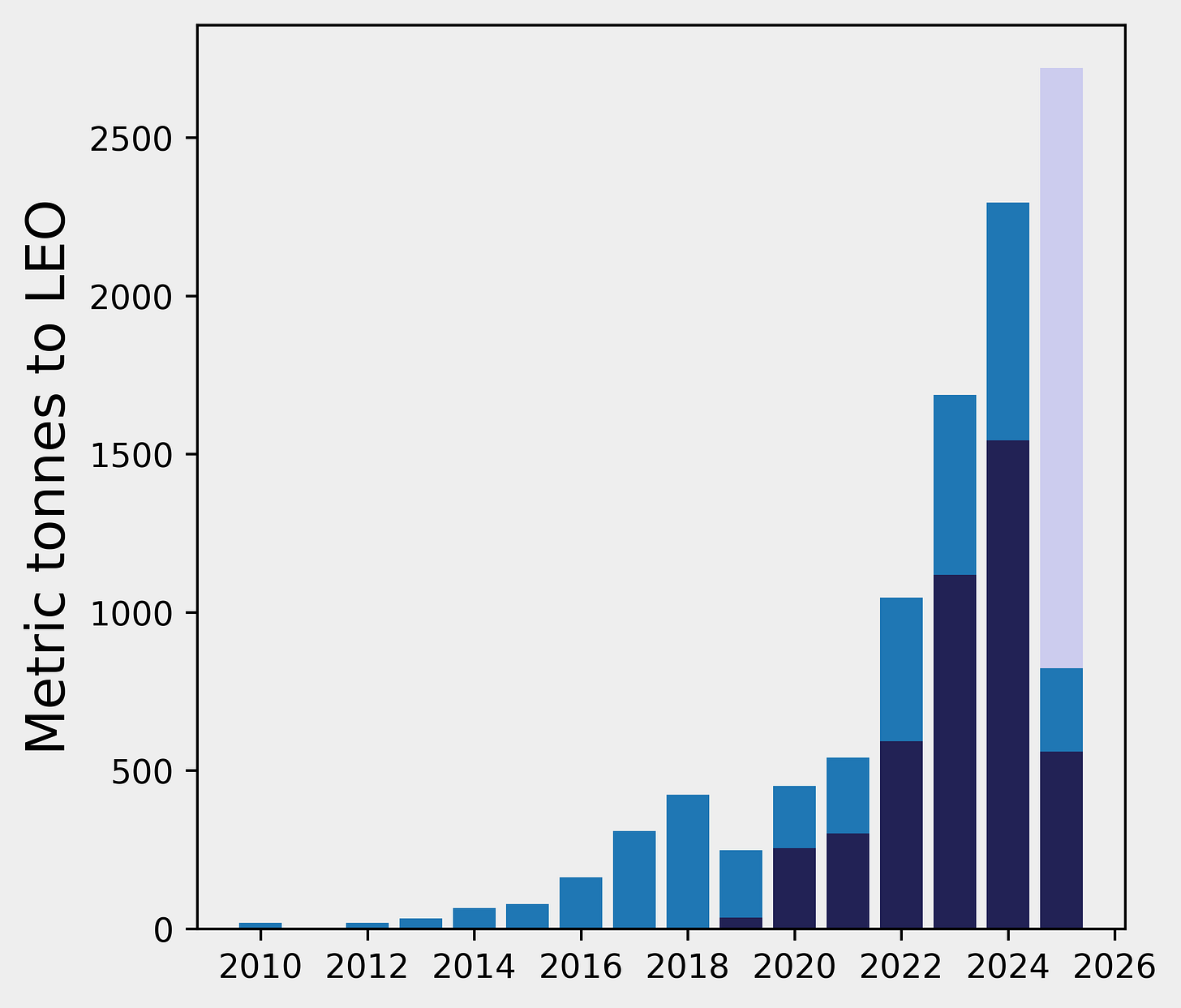Mass Value Report for April 2025
What is the current state of the race to return humans to the Moon?
During a recent static fire, the next Starship being prepared for a test flight suffered an anomaly. Its not been stated at this point if this is related to the event that destroyed flights 7 and 8. It is likely flight 9 will be delayed at this point, with a potential impact on the total flights that are possible this year.
This is happening at a time of great change in the US space program - the new administration is talking about scrapping the SLS program beyond Artemis 3, and the Gateway space station. The incoming administrator, Jared Isaacman, has affirmed his commitment to putting American boots back on the Moon before China can visit there though, using the existing SLS/Orion/Starship architecture. So where does this leave the Moon race? And are there any other ways to do it?
As usual, first we update the Falcon cadence model.
Falcon Cadence
There has been an uptick in the flight rate in April, and so I’m predicting 162 flights this year, up from 160 last month. What this looks like in terms of mass to orbit is this:
The darker part of the bar represents Starlink launches, and the lighter bar for 2025 is the projection for the remainder of the year. I’ve switched back to mass from flight count this month to emphasis something - the Saturn V could put 140 tonnes into LEO, and SpaceX look to be close to putting 20 times that into space this year. The most the Apollo program managed was 5 Saturn V rockets in a 12 month period.
Given that the ability to throw a lot more mass was one of the key reasons the US beat the Soviets to the Moon, does this mean that Falcon rockets could have returned humans to the Moon already? Perhaps, with the right architecture - the Earth Orbit Rendezvous approach (EOR) was considered as a mission profile for the Apollo missions - but for the period in which the mass to orbit capabilities of SpaceX reached the required level NASA was already committed to the SLS-based approach.
Long March to the Moon
The architecture on the other side is a bit different from either approach. To land humans on the Moon, China is building the Long March 10, a triple core rocket that uses 7 of the well established YF-100 engines on each core, and each one is the same diameter as the LM-5 core stage - presumably so they can be manufactured by the same machinery. A recent presentation outlined the planned missions for this rocket:
Keep reading with a 7-day free trial
Subscribe to Planetocracy to keep reading this post and get 7 days of free access to the full post archives.


